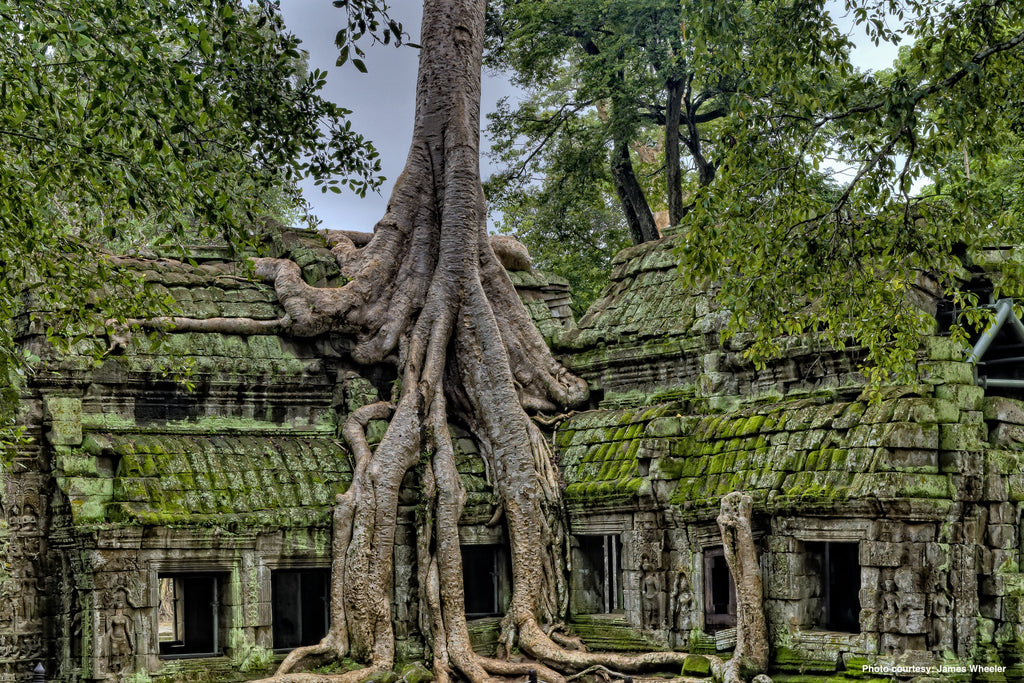The importance of Restoring our Ecosystems

Growing up, we’ve all had our favourite classics like The Lion King, Jungle Book, Madagascar, Kung Fu Panda. The list goes on and on. Most of us love calling ourselves animal lovers and quite often binge-watch animal and nature-centric movies and documentaries. We’re all guilty of trying to make up stories around fake encounters with tigers, lions and other wild beasts to narrate to our friends at school. Or are you normal?
With all this fascination around animals and nature, how many of us know of the importance of wildlife and biodiversity - on land and water, and their importance in our existence.
Recently, we had the opportunity to interact with experts from UNEP and eco-activists from UNICEF for World Environment Day on biodiversity and its restoration and found ourselves learning lots of new, practical advice needed to preserve our ecosystems.
Q1. Why is wildlife so important in the world? How can the extinction of animals be stopped?
Ans. Wildlife constitutes an important link in our living world and the complex web of life. Whole living systems including humans can collapse when the link gets disturbed! To understand these interconnections better, you could watch ‘A Life on Our Planet’. Produced by WWF and award-winning wildlife film-makers Silverback Films, David Attenborough: A Life On Our Planet is a first-hand account of humanity’s impact on nature, how biodiversity regulates extreme temperatures and balances the Earth's ecosystem a message of hope for future generations.
Here are 5 steps to prevent animal extinction:
- Ending illegal wildlife trade
- Protecting, restoring, and conserving the world’s biodiverse habitats
- Combating climate change
- Buying ethical, eco-friendly, and animal-friendly products
- Increasing public awareness
Q2. As an individual, what role can one play in increasing green cover?
Ans. As an individual, you can start by making yourself aware of the role played by trees and green cover. You can spread awareness among your neighbours and friends, motivate them to take care of the trees and shrubs in your area, a garden, a public space, a farm, or even a whole country. Always remember that it is not about simply planting trees but looking after them and ensuring they grow. Make sure you plant the right tree at the right place at the right time.
Planting species that are not adapted to local conditions can lead to problems – for example “thirsty” species can suck out water from dry landscapes.
Take this crash course in tree plantations. You can also start learning about various tree plantation initiatives in India online and maybe even join one of them!
Q3. Is there climate justice? Where is climate change further increasing the existing inequalities between rich countries and less developed countries?
Climate change will affect different people and places unevenly, and so it is likely to lead to inequalities within and across nations, and between current and future generations, therefore creating injustice. “Climate justice” is a term that acknowledges climate change has differing social, economic, public health, and other adverse impacts on underprivileged populations, and that it worsens existing inequalities between developed and less-developed countries.
Click here to read more about how climate change disproportionately impacts low-income and marginalised communities in an Indian context.
Click here to read more about how climate change disproportionately impacts girls and women.
Q4. Is achieving a maximum of 1.5 degrees increase in global average temperature over pre-industrial levels still possible? What do countries need to do for this to happen?
There is no safe level of global warming. But limiting global warming to a 1.5˚C increase in global average temperature over pre-industrial levels is still possible. Global carbon dioxide emissions have to reduce 45% by 2030 from the 2010 level and reach “net zero” by 2050. This will need an annual average investment in the energy system of around USD 2.4 trillion (at 2010 prices) between 2016 and 2035, representing about 2.5% of the world GDP.
As of May 2021, a substantial gap remains between the levels of emissions in 2030 projected in the NDCs submitted to the UNFCCC, including those recently announced by Canada, China, Japan, South Africa and Ukraine, and the lower levels that would be consistent with the temperature limit of the Paris Agreement.
Assuming full implementation of the net-zero targets by the US, China and other countries that have announced or are considering such targets, but have not yet submitted them to the UNFCCC, global warming by 2100 could be as low as 2.0°C (‘Optimistic Targets’ scenario).
To know more, please visit: https://climateactiontracker.org/documents/853/CAT_2021-05-04_Briefing_Global-Update_Climate-Summit-Momentum.pdf
Q5. How do marine ecosystems help with global warming?
Ans. Marine ecosystems help in mitigating global warming through carbon sequestration. It's done mainly by algae, mangroves, salt marshes, seagrasses and macroalgae, through plant growth and the accumulation and burial of organic matter on the seafloor. The oceans cover over 70% of the Earth's surface.
Around a quarter of all CO2 emissions that human activity generates each year are absorbed by the oceans!
Help the CleanSeas campaign and turn the tide on plastic!
Q6. How can local rivers be preserved and stopped from being polluted in cities?
Ans. At its core, any initiative is dependent on stakeholder participation. First, urban communities must recognise the importance of their natural drainage systems for flood management, water-table restoration, ecosystem resilience and recreation. Only then a sustained effort can be carried out for sewage treatment and reviving the dying streams. Take a tour of the lake restoration efforts in India that will inspire you to take action! You can also take inspiration from the ‘Adopt a River’ section of this Rotary Club Guide.
Here are 5 simple steps to clean up the rivers in your vicinity:
- Clean it up
- Regulate access
- Restore vegetation
- Plan sustainability
- Protect and restore nature
Read in detail about the above action in this Ecosystem Restoration Playbook.
Alongside, policymakers need to integrate urban development with waterbody conservation and develop the necessary infrastructure like sewage treatment plants, garbage barriers, biodiversity parks and other bespoke solutions. Demand for these solutions in your locality!
Q7. Does ecological agriculture have higher carbon storage potential than forests?
Ans. Agroforestry is a sustainable land-use system with a promising potential to sequester atmospheric carbon into the soil. This system of land use distinguishes itself from the other systems, such as sole crop cultivation and afforestation on croplands only through its potential to sequester higher amounts of carbon than the aforementioned two systems.
Agroforestry is more attractive as a land-use practice for the farming community worldwide instead of cropland and forestland management systems. This practice is a win-win situation for the farming community and environmental sustainability.
Q8. Is global biodiversity loss still reversible? If not, what consequences will this have for life on land?
Ans. The unprecedented pace of biodiversity loss is directly linked to pollution, climate change, over-exploitation, and other human-induced factors. Today the Earth is losing biodiversity at an unforeseen rate which could weaken local ecosystems and affect food chains and nutrient cycles. This can affect global food security and the production of naturally derived medicines.
Biodiversity must be given far higher prominence and urgency in policy choices, and the adoption of the UN Global Biodiversity Framework at the COP15 biodiversity conference must be used as an opportunity to reverse the harm done.
Reversing biodiversity loss requires rethinking consumption, including how the impacts of production and consumption are distributed geographically. Achieving this will require explicitly and transparently pricing into goods the impacts of production on biodiversity throughout the supply chain. Widespread shifts in lifestyle, including a shift towards plant-based diets, will also be crucial.
All of this may get overwhelming at times, but we need to remember that once we all begin to take action, we will witness evident progress across landscapes and ecosystems. It’s important we remind ourselves that we’re all in this circle of life. Everything that goes around, comes around.
Chris Maser, the author of ‘Forest Primeval: The Natural History of an Ancient Forest’ says, “What we are doing to the forests of the world is but a mirror reflection of what we are doing to ourselves and to one another.” Looking after our biodiversity and local ecosystems is ultimately an act of self-love. A love that isn’t selfish but selfless.
Thank you, Climate and Environment Action Team for making this open source to share widely!
